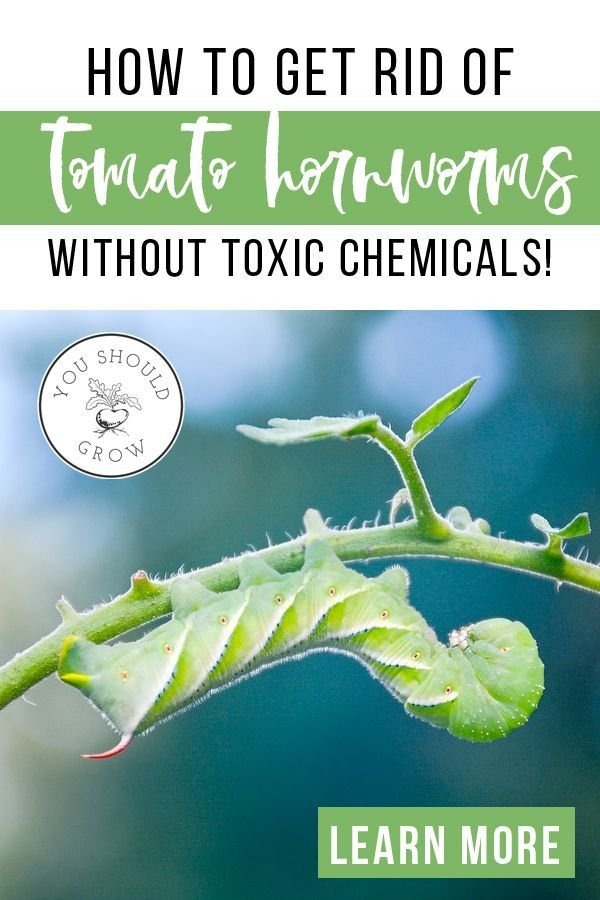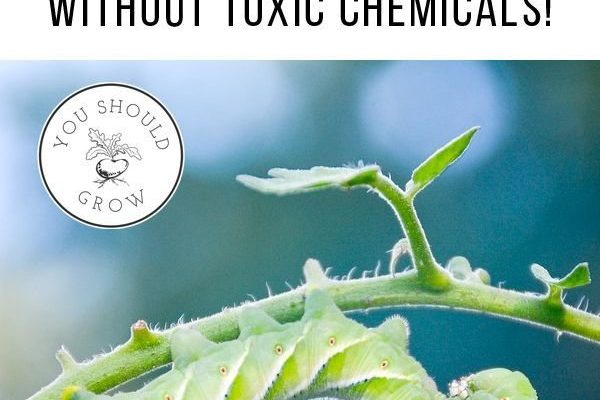
Think of it like cleaning a messy room. You wouldn’t just throw a bunch of toxic cleaners at the mess; you’d want to identify what you’re dealing with first and find a gentle yet effective way to tidy up. In this article, we’ll explore some simple, natural strategies to get rid of hornworms, keeping your garden healthy and chemical-free. Ready to learn how? Let’s dig in!
Understanding Hornworms and Their Impact
Hornworms are the larval stage of the five-spotted hawk moth, and they can wreak havoc on your garden if left unchecked. They’re voracious eaters, often growing up to four inches long. When you spot one, it may already have devoured a significant portion of your plant’s leaves. You might be wondering why these caterpillars are such a problem. Well, they not only reduce the amount of foliage and fruit your plants produce, but they can also stress the plants, making them more vulnerable to disease and pests.
The best way to tackle hornworms is by being proactive. Regularly check your plants for signs of these munching menaces. Look for large green caterpillars and their droppings, which resemble little black pellets. If you catch them early, you can prevent further damage.
Before jumping into removal methods, it’s crucial to understand their life cycle. Hornworms typically emerge in spring and can quickly grow into pests if conditions are right. Knowing this helps you plan your defenses ahead of time.
Handpicking: A Simple but Effective Method
If you’re feeling brave, one of the most straightforward ways to remove hornworms is by handpicking them off your plants. Yes, it sounds a bit gross, but it can be surprisingly satisfying. Equip yourself with gardening gloves, a small bucket, or even a ziplock bag.
When you’re out in the garden, look closely at the undersides of leaves and between branches. Hornworms are masters at camouflage, so you might need to do a little detective work. If you spot one, gently grasp it and place it in your bucket. Make sure to check both the plants you suspect they might be on and any nearby vegetation (they can sometimes wander).
Once you’ve collected a handful, you can either relocate them to a less harmful spot (like a wild area away from your garden) or simply dispose of them. Just remember, hornworms can be a part of the ecosystem, so relocating is usually the kinder option.
Encouraging Natural Predators
Another effective strategy for managing hornworms is to encourage natural predators. Just like you might invite friends over to keep the chaos at bay, you can attract birds and beneficial insects that feed on hornworms. For example, wasps, certain beetles, and birds like blue jays are natural enemies of these pesky caterpillars.
To attract these helpful creatures, consider planting a variety of flowers and shrubs in your garden. Native plants are often the best bet as they provide a habitat for birds and insects. Also, try to avoid using chemical pesticides that could harm these beneficial creatures. Instead, look for organic or natural pest control options if needed.
Additionally, you can put up bird feeders or birdhouses to give your feathered friends a cozy spot to settle down. The more natural helpers you have around, the less likely hornworms are to make themselves at home in your garden.
Using Homemade Sprays
If handpicking and encouraging predators aren’t getting you the results you want, you might consider making a homemade spray. Certain natural ingredients can deter hornworms without harming your plants.
One popular recipe includes mixing water with a few drops of *dish soap* and a little *hot pepper sauce*. The idea here is that the soap makes it harder for the hornworms to stay on the plants, while the hot pepper repels them. Just be cautious—test the spray first on a small section of your plant to ensure it’s not too harsh.
Spray this mixture directly onto the hornworms and the plants they’re munching on. Remember that repeat applications may be necessary, especially after rainfall, to keep the protective barrier strong.
Companion Planting: A Proactive Approach
Companion planting is another great way to manage hornworms naturally. This approach involves planting certain plants together to enhance growth and deter pests. Some plants, like marigolds and basil, are known to repel hornworms and other pests, while also attracting beneficial insects.
When planning your garden layout, think about how you can incorporate these companion plants. For instance, interspersing marigolds among your tomatoes could help shield them from hornworms. You’ll not only create a more diverse and healthy garden but also enhance its aesthetic appeal.
Additionally, certain *herbs* such as mint and rosemary can serve as natural deterrents. Just be aware that some herbs can spread aggressively, so plan your garden accordingly.
Regular Monitoring and Garden Maintenance
Consistency is key when it comes to managing hornworms. Just like cleaning the house requires routine upkeep, your garden needs regular monitoring. Make it a habit to inspect your plants at least once a week. Be on the lookout for holes in the leaves or any sign of hornworm activity.
Also, a healthy garden is less susceptible to pests. Practicing proper garden maintenance—like watering, pruning, and soil management—will help keep your plants strong. Strong, healthy plants can recover better from any damage and are less attractive to pests.
Consider setting aside some time each week for light gardening duties, which can be a relaxing way to enjoy nature. Plus, it allows you to catch hornworms early before they have a chance to do much damage.
Final Thoughts on Chemical-Free Hornworm Removal
Removing hornworms from your garden doesn’t have to mean reaching for harsh chemicals or pesticides. With a little effort, creativity, and awareness, you can keep your plants safe and thriving. From handpicking to encouraging natural predators, there are plenty of effective, eco-friendly solutions available to you.
As you navigate your gardening journey, remember that every plant and pest interaction is a chance to learn. Embrace the experience, be patient with yourself, and always be on the lookout for new, natural ways to protect your garden without compromising on health or safety. Happy gardening!

